Lulworth Cove – World Heritage On The Jurassic Coast
Something a little different today as we get out of London to explore a UNESCO World Heritage Site at Lulworth Cove on England’s South coast.
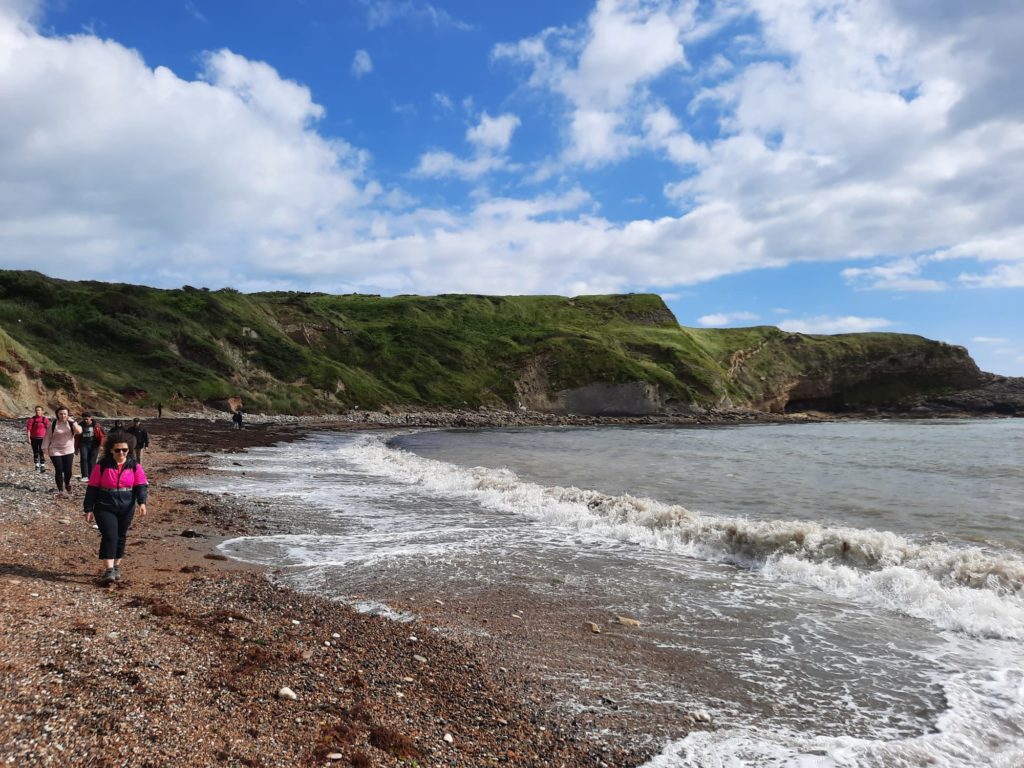
The Dorset Coast – Important Natural Heritage
I don’t always write about all the trips I do out of London. But when I went to a UNESCO World Heritage site a short time after Liverpool had been stripped of that status, it seemed like an important thing to reflect on. A UNESCO World Heritage site is “…a landmark or area, selected by the United Nations Educational, Scientific and Cultural Organization (UNESCO) for having cultural, historical, scientific or other form of significance, which is legally protected by international treaties.” The scheme goes back to the 1970s, and there are now more than 1,000 sites inscribed.
Frankly there are some pros and cons to the scheme (for more discussion see here for starters). It can encourage funding, and means bad heritage management comes under some scrutiny; at the same time increased visitor numbers drawn by UNESCO status can cause the very degradation UNESCO wants to avoid. And a listing in the first place comes at a cost (in manpower and resources, not fees) which privileges wealthier places over poorer ones.
So what is the Jurassic Coast UNESCO listing all about? Well, for a start, it is England’s only natural World Heritage site. It covers 95 miles of coast, and, as the name suggests, is important because of some very ancient history. Basically, this stretch of coast has a wealth of fossils; from not just the Jurassic but also the Triassic and Cretaceous periods. Almost 200,000,000 years of history. It is on the Jurassic Coast that pioneering fossil hunter Mary Anning made important early discoveries. Today you will see many amateur fossil hunters turning over pieces of chalk to see what they can find.
The part of the Jurassic Coast I explored (on a hike with London Social Hiking) were the trails around Lulworth Cove, between Poole and Weymouth. Let’s look in more detail at what’s on offer and how this heritage is managed.
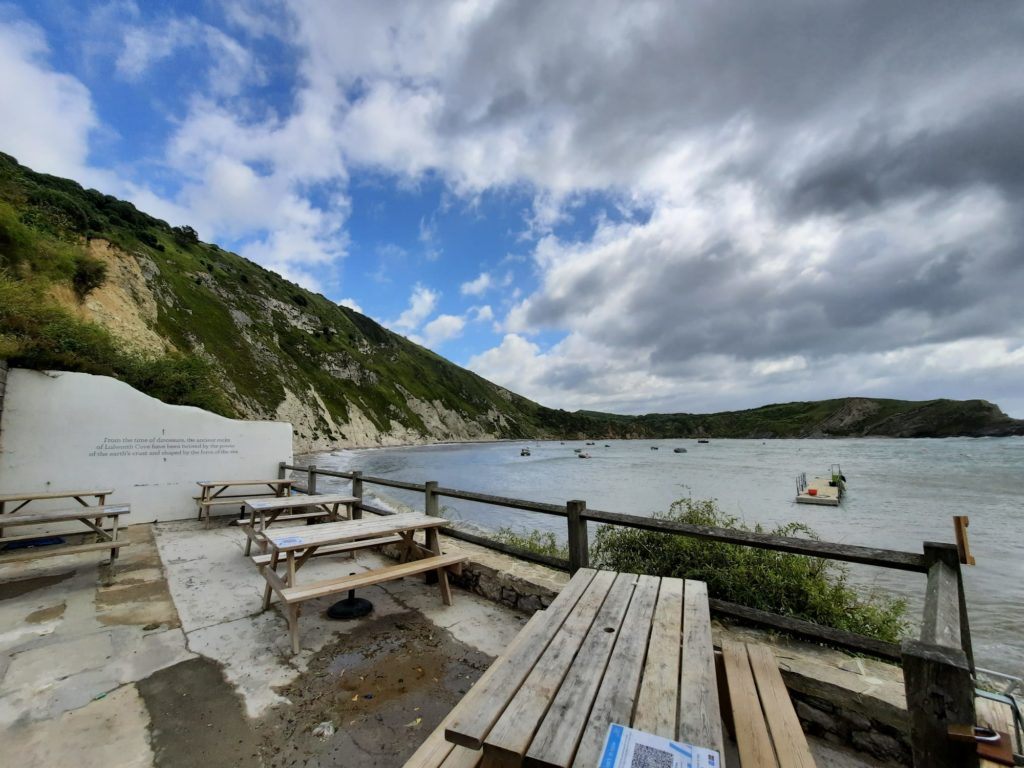
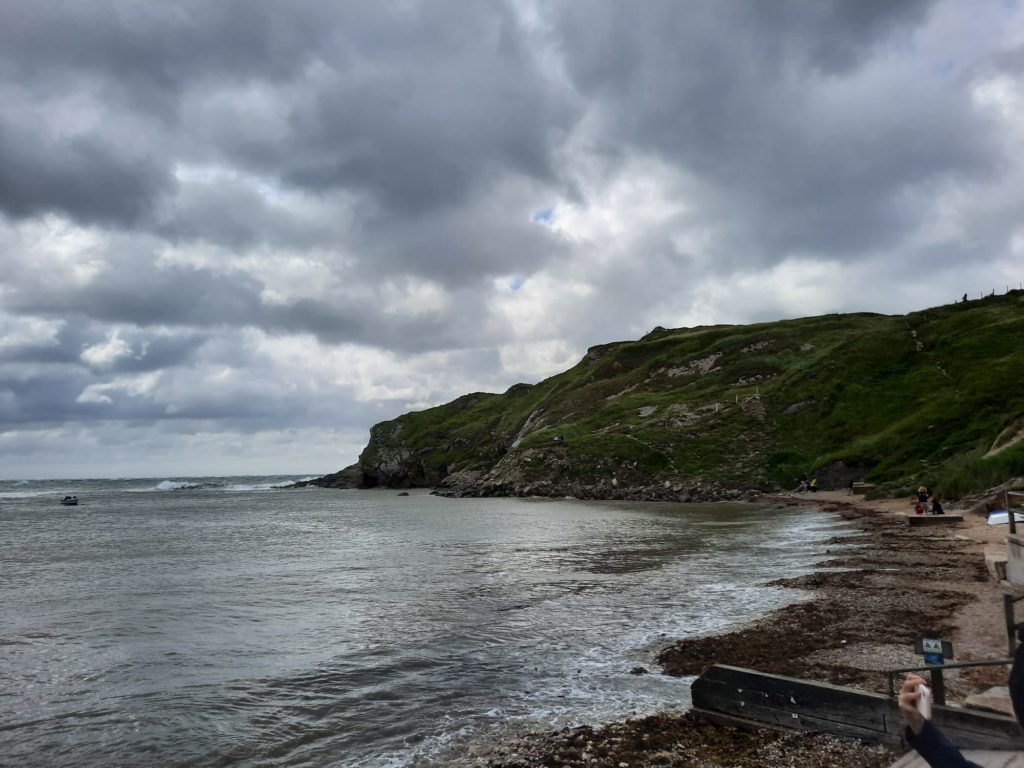
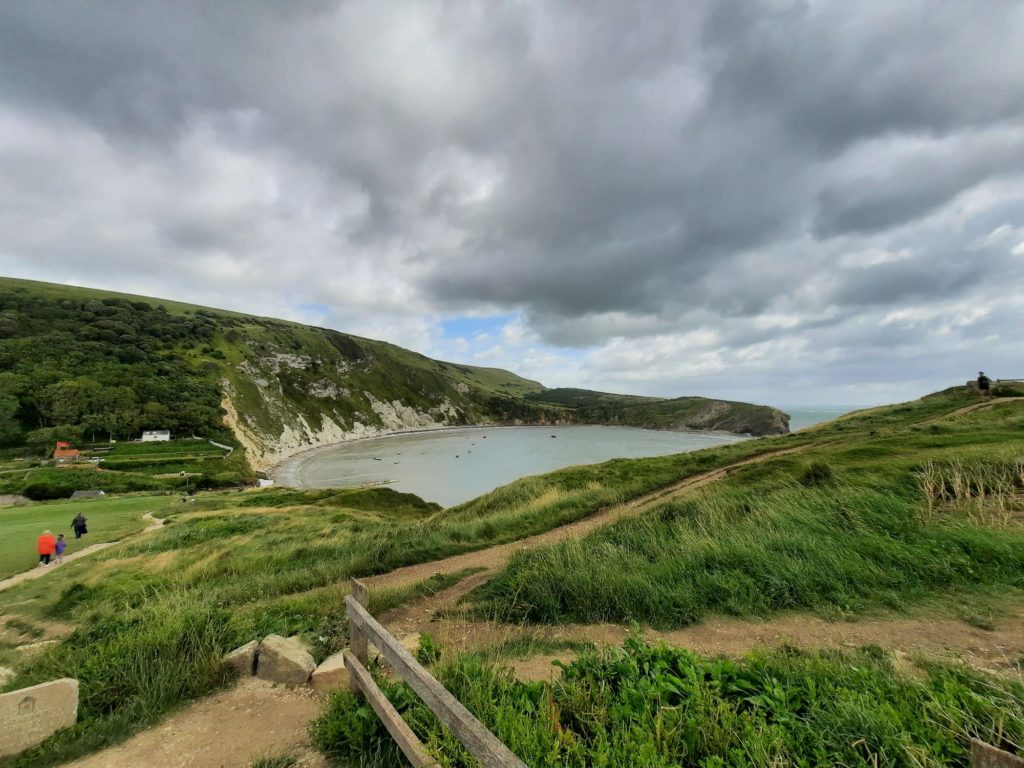
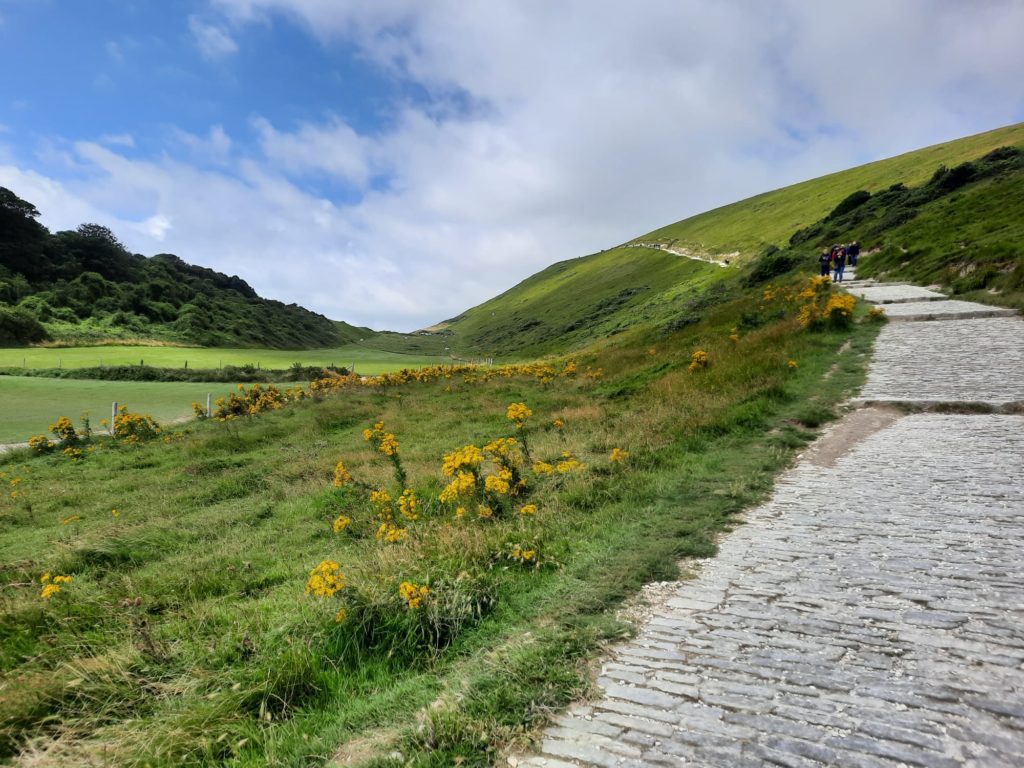
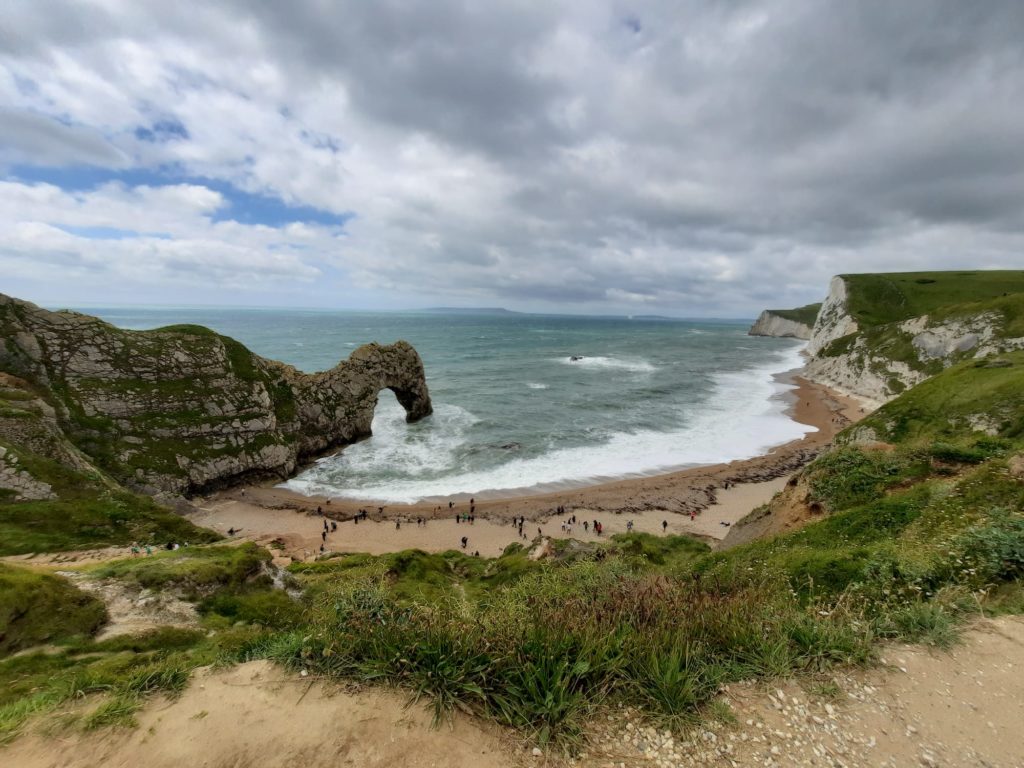
Walks Around Lulworth Cove
My day hike from London took me to Lulworth Cove. This is part of the expansive Lulworth Estate, managed by the Weld family since 1641. (Coming from a country where most of the coastline is public property I still find this private ownership perturbing, but I digress.) Just next to Lulworth Cove are some well-developed facilities; this includes a visitor centre, gift shop, toilets, and multiple options for food and drink. From here there are walks in several directions, with various degrees of difficulty.
Our London Social Hiking group went on two of these walks. The first took us over a hill to Durdle Door, a natural limestone arch, and then onwards to get a view of Man O’ War Beach. The second took us around Lulworth Cove and past some Ministry of Defense training grounds to see a fossil forest. We were lucky not to have any rain, but had to contend with blustery winds. As I walked, here are a few thoughts which struck me:
- There is very little interpretation here
I found it interesting that this is part of a UNESCO World Heritage Site, but there is very little in the way of information panels. Maybe I missed something, but I would have liked to learn a bit more about the different geological forces, different time periods etc. - Overall site management but not day to day management
The Lulworth site is pretty well managed. There are paths where required. Everything is clear and orderly, and comes with safety instructions. I was a little surprised, though, that you can just smash some rocks and take away any fossils you find. My point of reference is New Zealand, where I think somewhere like this would have some DOC (Department of Conservation) rangers to make sure everyone was behaving and not damaging anything. - A compact historic site
Something that I enjoyed about Lulworth was how much it packs in. Beaches, natural landmarks, thatched cottages, fossils; you really need that continuity of habitation over a long time period to have a site that is convenient to reach and has such a wide variety of attractions.
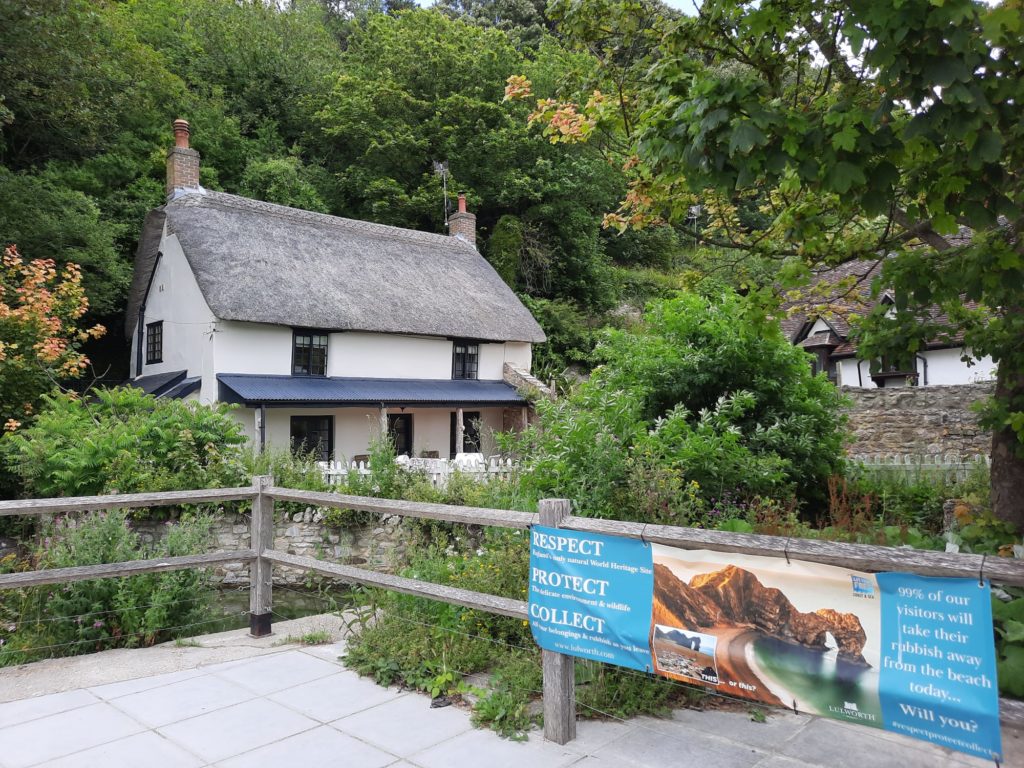
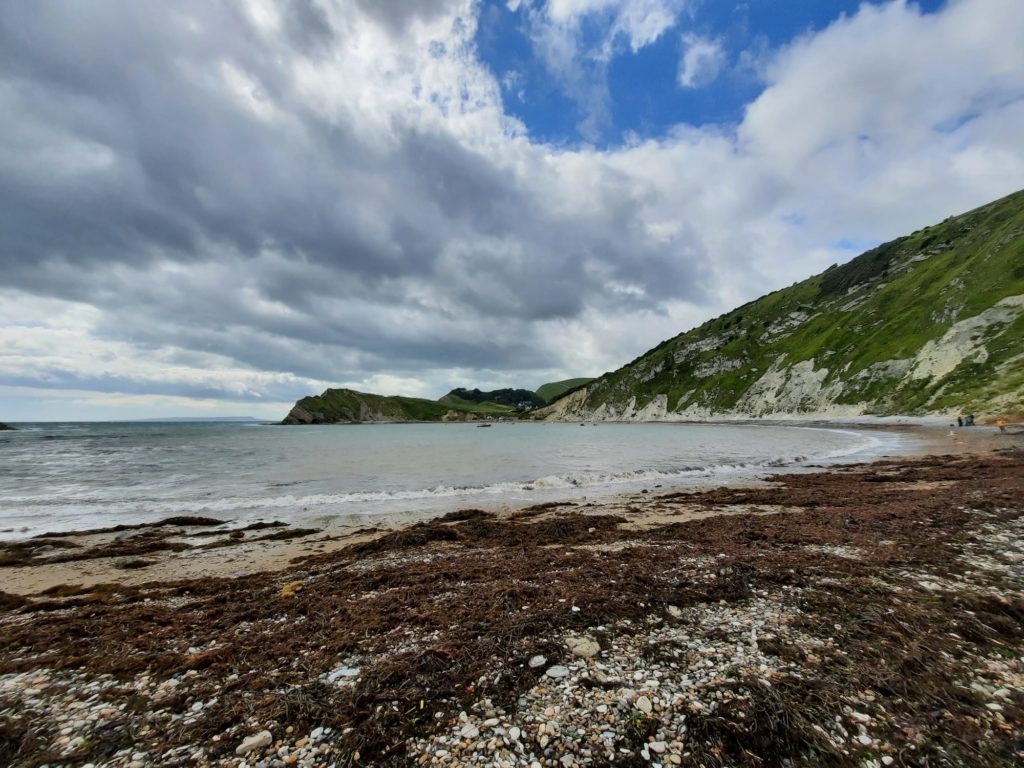
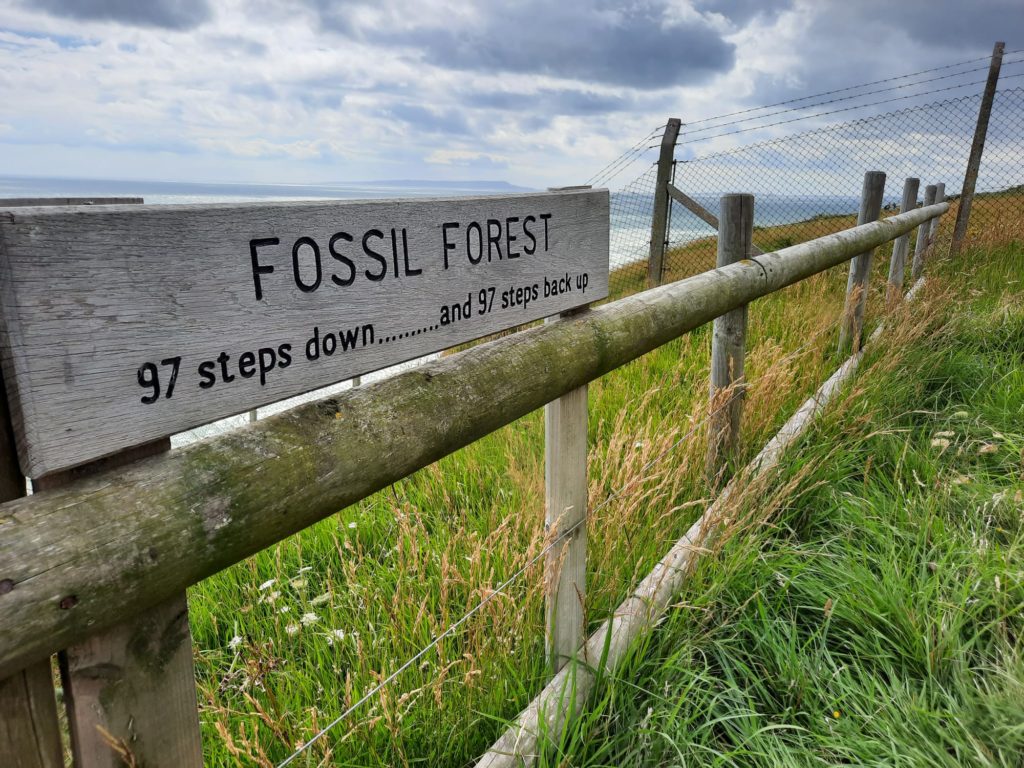
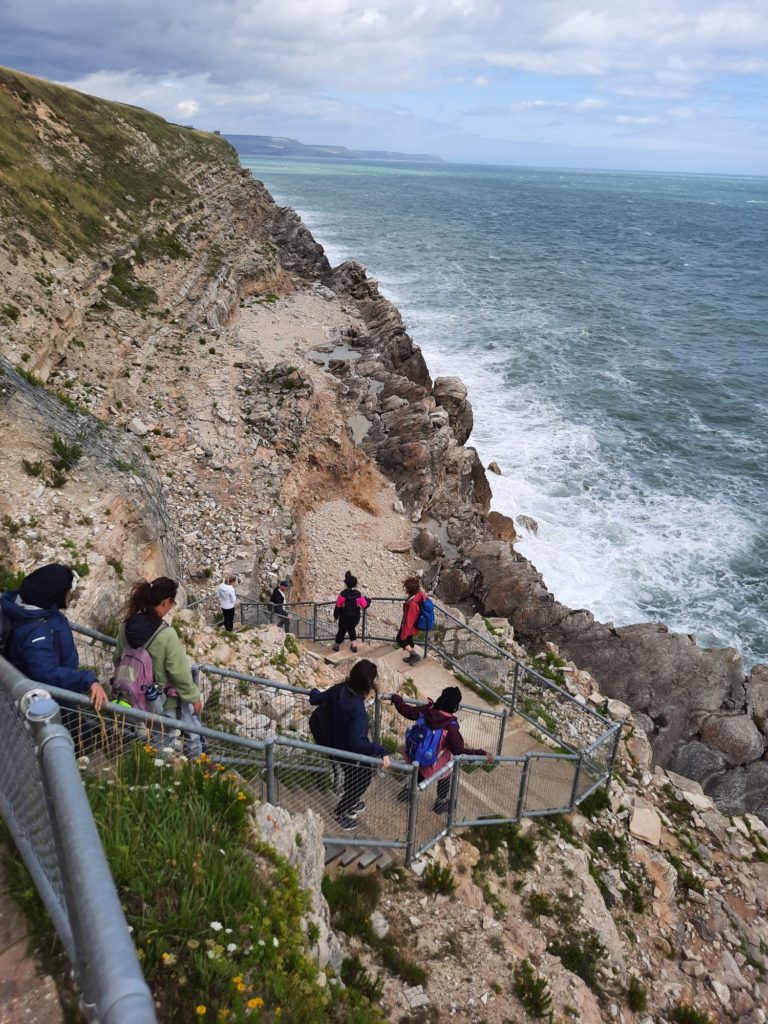
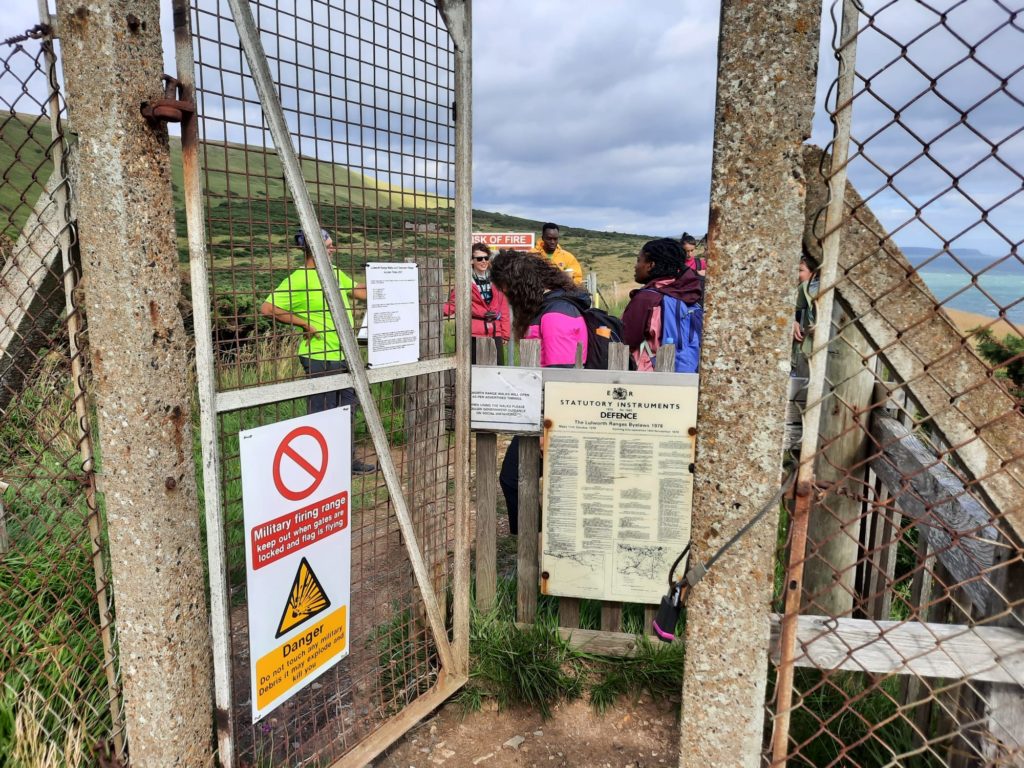
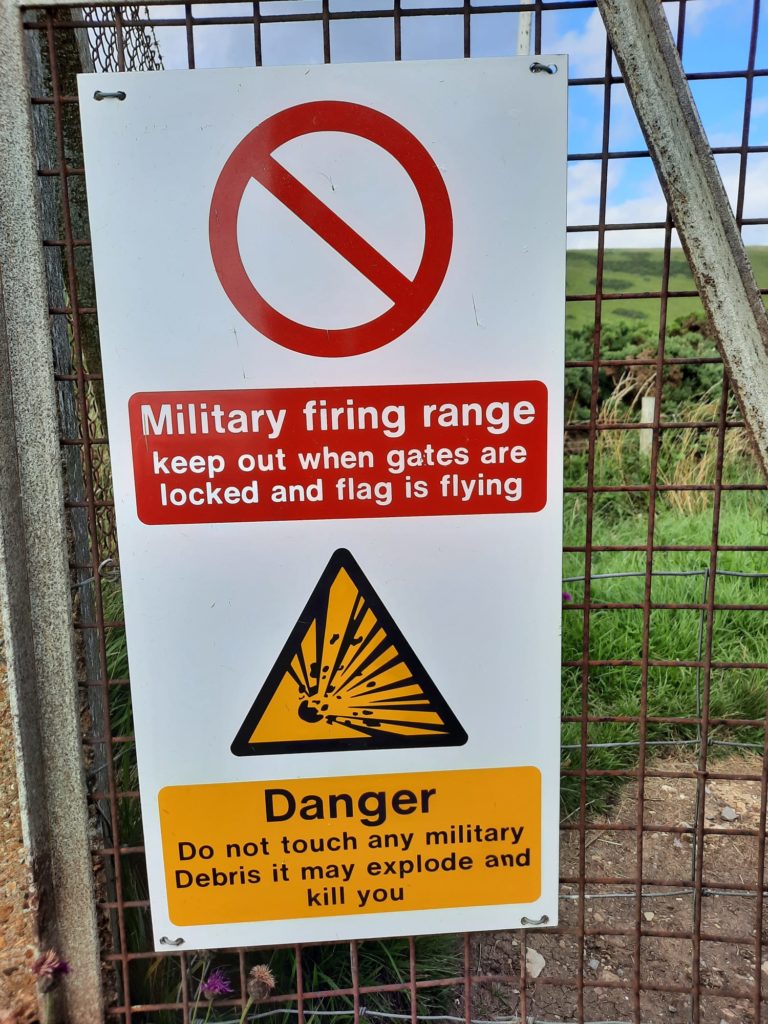
Final Thoughts
I have been wanting to see the Jurassic Coast for a while; this outing with London Social Hiking was a good first step. It’s a long day from London but doable, and introduces you to some different things you will see along this coastline. I’m still in two minds about what this means as a UNESCO World Heritage site and how it is managed; I intend at some point to attempt a Jane Austen-sort of excursion to Lyme Regis; so will continue my pondering as I see more of the Devon and Dorset coast.
For now though I have enjoyed a day out in the fresh air with a variety of landscapes packed into a small area. You could certainly do worse for a day’s hiking than Lulworth Cove!
Find more staycation inspiration by signing up below:
If you see this after your page is loaded completely, leafletJS files are missing.

